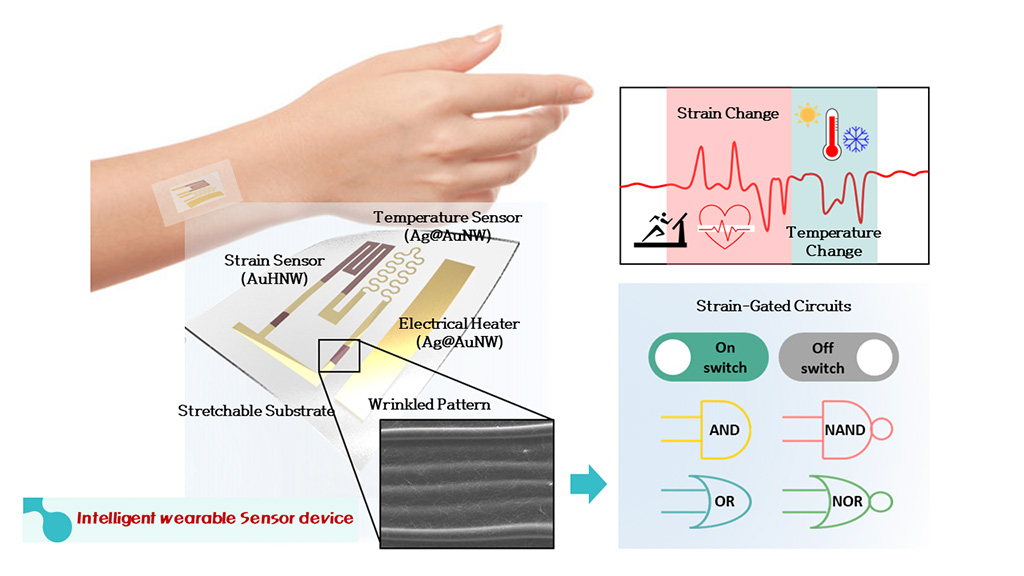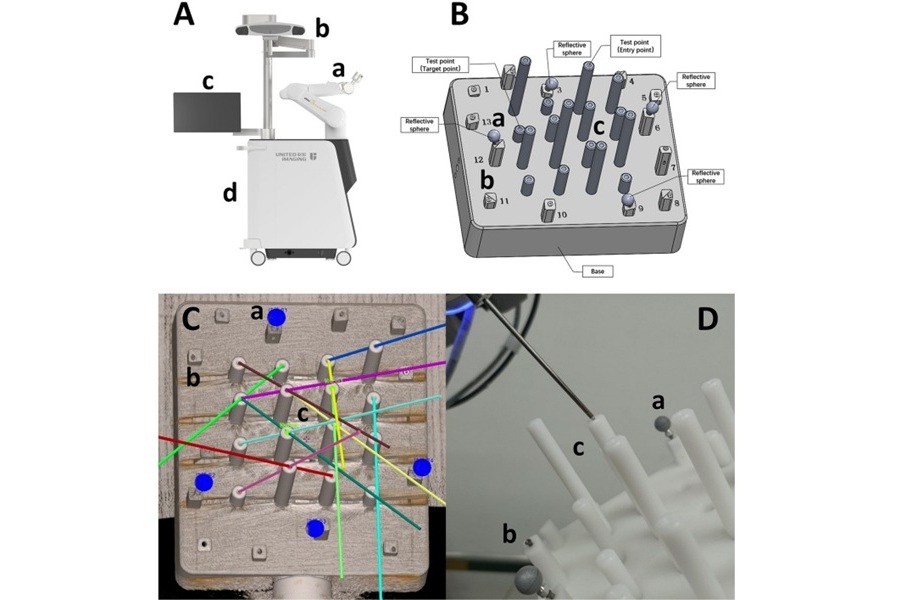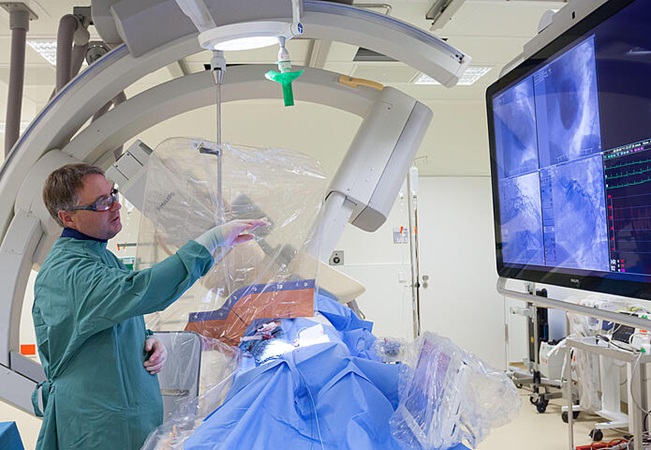Cutting-Edge Wearable Device with Gold Nanowires to Enhance Disease Diagnosis
|
By HospiMedica International staff writers Posted on 27 Nov 2023 |

Gold, known for its stability, excellent electrical conductivity, and biocompatibility, is widely used in the medical and energy sectors. It is also becoming increasingly popular in advanced wearable technology. Wearable devices, which come in various forms like attachments and patches, are crucial for monitoring physical, chemical, and electrophysiological signals for disease diagnosis and management. Recent research has been focusing on creating wearables that can simultaneously measure multiple bio-signals. However, this poses challenges due to the need for different materials for each signal, leading to complex fabrication, interface damage, and decreased stability of the device. Moreover, analyzing these diverse signals typically requires additional processing systems and algorithms. Researchers have now made a breakthrough by utilizing gold (Au) nanowires in different shapes to create an integrated wearable sensor capable of measuring and processing two bio-signals at the same time.
At Pohang University of Science and Technology (POSTECH, Gyeongbuk, Korea), researchers have innovatively combined gold with silver (Ag) nanowires which are recognized for their extreme thinness, lightness, and conductivity, and are generally used in wearable devices. They first developed bulk gold nanowires by coating silver nanowires with gold, thus preventing the galvanic reaction. Then, they created hollow gold nanowires by selectively etching away the silver from the gold-coated nanowires. The bulk gold nanowires demonstrated high sensitivity to temperature changes, while the hollow gold nanowires were particularly responsive to the slightest variations in strain.
These nanowires were then arranged on a substrate made of styrene-ethylene-butylene-styrene (SEBS) polymer, ensuring a seamless integration without separations. By using two types of gold nanowires, each with unique properties, the researchers were able to make an integrated sensor that simultaneously measures temperature and strain. They also developed a logic circuit for signal processing, employing a negative gauge factor achieved by adding micrometer-scale corrugations to the pattern. This innovation resulted in a smart wearable device system capable of capturing and analyzing signals using a single material of Au.
The sensors displayed excellent performance in detecting subtle muscle movements, identifying heartbeats, recognizing speech from vocal cord tremors, and monitoring body temperature changes. Remarkably, these sensors remained highly stable without damaging the material interfaces. Their flexibility and stretchability allowed for perfect adherence to the contours of the skin.
“This research underscores the potential for the development of a futuristic bioelectronics platform capable of analyzing a diverse range of bio-signals,” said Professor Sei Kwang Hahn who led the research team. “We envision new prospects across various industries including healthcare and integrated electronic systems.”
Related Links:
POSTECH
Latest Critical Care News
- Earlier Blood Transfusion Could Reduce Heart Failure and Arrhythmia in Heart Disease Patients
- 'Smart' Shirt Detects Epileptic Seizures in Real Time
- Skin Patch Measures Effectiveness of Flu/COVID Vaccines in 10 Minutes
- Complete Revascularization Reduces Risk of Death from Cardiovascular Causes
- Tiny Fish-Inspired Robots Navigate Through Body to Deliver Targeted Drug Therapy
- Coronary Artery Stenosis Could Protect Patients from Pulmonary Embolism Effects
- Sweat-Powered Sticker Turns Drinking Cup into Health Sensor
- Skin-Mounted 3D Microfluidic Device Analyzes Sweat for Real-Time Health Assessment
- New Therapeutic Brain Implants to Eliminate Need for Surgery
- Stem Cell Patch Gently Heals Damaged Hearts Without Open-Heart Surgery
- Biomaterial Vaccines to Make Implanted Orthopedic Devices Safer
- Deep Learning Model Predicts Sepsis Patients Likely to Benefit from Steroid Treatment
- Programmable Drug-Delivery Patch Promotes Healing and Regrowth After Heart Attack
- Breakthrough Ultrasound Technology Measures Blood Viscosity in Real Time
- Magnetically Activated Microscopic Robotic Swarms Could Deliver Medicine Inside Body
- Frequent ECG Use Can Identify Young People at Risk of Cardiac Arrest
Channels
Surgical Techniques
view channel
Ablation Reduces Stroke Risk Associated with Atrial Fibrillation
Atrial fibrillation (AFib) greatly increases the risk of stroke, blood clots, heart failure, and death, and millions of people in the U.S. are expected to be affected in the coming years.... Read more
Optical Tracking Method Identifies Target Areas in Robot-Assisted Neurosurgery
Epilepsy occurs when nerve cells misfire and produce uncontrolled electrical bursts in the brain, leading to seizures. While most patients respond to medication, about 30% require more advanced intervention.... Read morePatient Care
view channel
Revolutionary Automatic IV-Line Flushing Device to Enhance Infusion Care
More than 80% of in-hospital patients receive intravenous (IV) therapy. Every dose of IV medicine delivered in a small volume (<250 mL) infusion bag should be followed by subsequent flushing to ensure... Read more
VR Training Tool Combats Contamination of Portable Medical Equipment
Healthcare-associated infections (HAIs) impact one in every 31 patients, cause nearly 100,000 deaths each year, and cost USD 28.4 billion in direct medical expenses. Notably, up to 75% of these infections... Read more
Portable Biosensor Platform to Reduce Hospital-Acquired Infections
Approximately 4 million patients in the European Union acquire healthcare-associated infections (HAIs) or nosocomial infections each year, with around 37,000 deaths directly resulting from these infections,... Read moreFirst-Of-Its-Kind Portable Germicidal Light Technology Disinfects High-Touch Clinical Surfaces in Seconds
Reducing healthcare-acquired infections (HAIs) remains a pressing issue within global healthcare systems. In the United States alone, 1.7 million patients contract HAIs annually, leading to approximately... Read moreHealth IT
view channel
Printable Molecule-Selective Nanoparticles Enable Mass Production of Wearable Biosensors
The future of medicine is likely to focus on the personalization of healthcare—understanding exactly what an individual requires and delivering the appropriate combination of nutrients, metabolites, and... Read moreBusiness
view channel
Philips and Masimo Partner to Advance Patient Monitoring Measurement Technologies
Royal Philips (Amsterdam, Netherlands) and Masimo (Irvine, California, USA) have renewed their multi-year strategic collaboration, combining Philips’ expertise in patient monitoring with Masimo’s noninvasive... Read more
B. Braun Acquires Digital Microsurgery Company True Digital Surgery
The high-end microsurgery market in neurosurgery, spine, and ENT is undergoing a significant transformation. Traditional analog microscopes are giving way to digital exoscopes, which provide improved visualization,... Read more
CMEF 2025 to Promote Holistic and High-Quality Development of Medical and Health Industry
The 92nd China International Medical Equipment Fair (CMEF 2025) Autumn Exhibition is scheduled to be held from September 26 to 29 at the China Import and Export Fair Complex (Canton Fair Complex) in Guangzhou.... Read more














